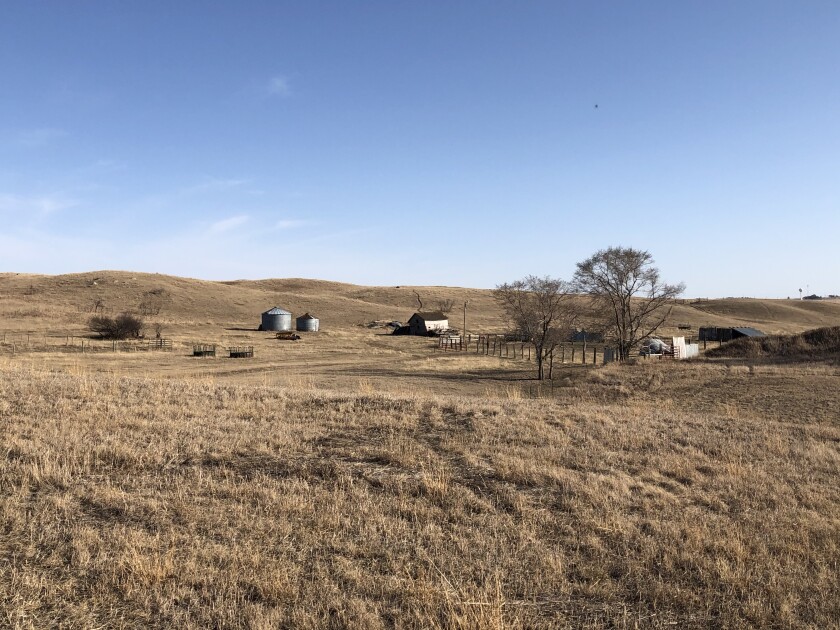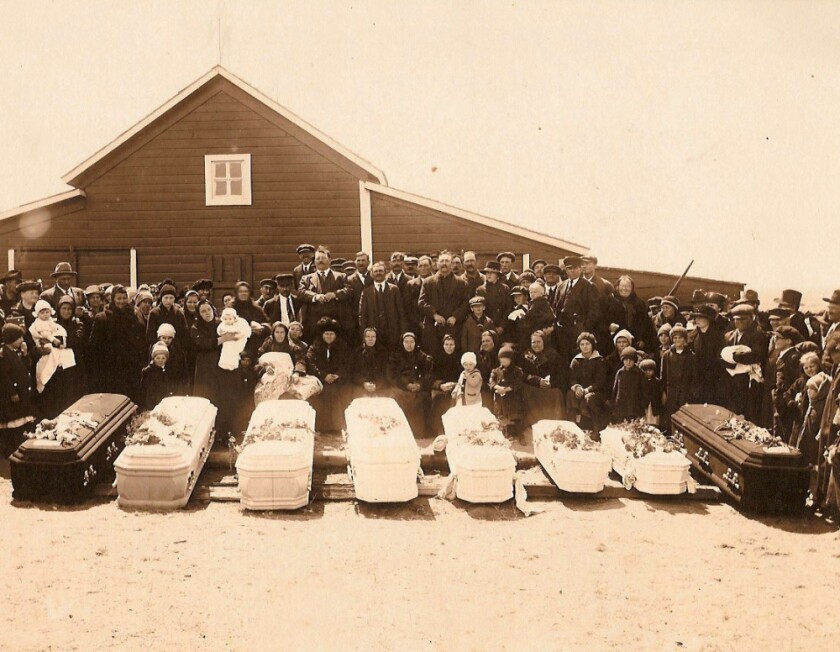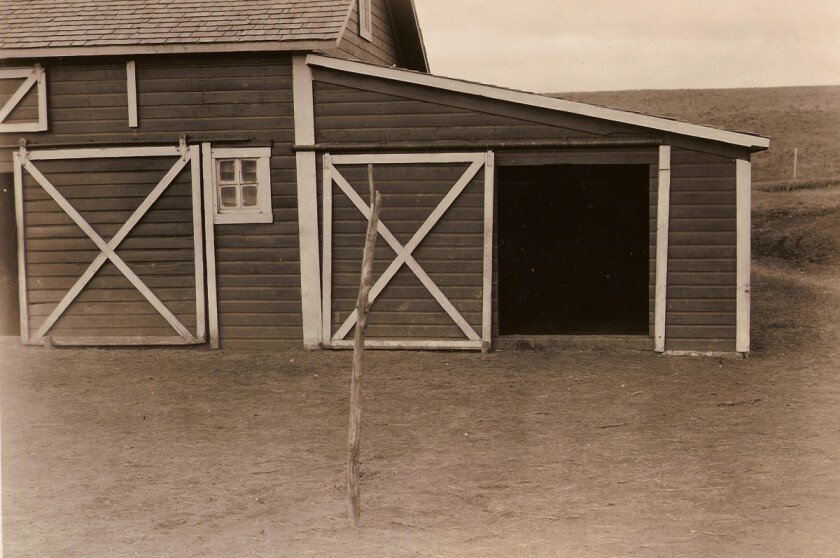Listen to Turtle Lake Murders episode #1
Listen to Turtle Lake podcast episode #2
ADVERTISEMENT
TURTLE LAKE, N.D. — It’s a secluded place you can’t easily find off the beaten path, in a valley between small rolling hills, protected by a seldom-opened chained gate. A couple of weather worn farm buildings, a broken fence and a couple of trees dot the landscape. It looks a lot like many abandoned farmsteads in rural America. But this one is different. It is the site of North Dakota's worst mass murder, 101 years ago.

In a four-part series, Forum Communications is looking back at a crime so horrific that newspaper editors of the time ran out of words to describe it — “without parallel,” “brutal,” “revolting” and “mysterious," were among the adjectives they used.
In episode one of The Turtle Lake Murders podcast, Reporter Tracy Briggs described the specifics of the murders of Jacob Wolf , 41; Beata Wolf, 35, their five daughters ranging in age from 3 to 12 and a teenage farm hand on April 20, 1920. Neighbor Henry Layer confessed to all of the murders.
ADVERTISEMENT

In episode #2, experts dive deeper into why some are now saying it appears the wrong man might have been convicted and ended up dying in prison. In fact, when one looks closely, the state didn’t have a strong case against Layer.
NDSU Archivist John Hallberg told WDAY news in 2015, “The evidence that linked Mr. Layer to this, there really wasn't any physical evidence actually connecting him to the crime, he confessed after grilling.”
" (He) told me that if I would not say what he wanted he would beat my brains out. I then gave up, started to cry, and said that I would do and say what they wanted."
-Henry Layer on how law enforcement officials got him to confess to killing 8 people in 1920.
Was Layer beaten and coerced?
The "grilling", according to Layer, was pretty intense.
In an affidavit he signed after he went to prison, Layer declared his innocence. He says he was questioned well into the early morning hour, was cursed at, beaten, and made to stand until he got dizzy and fainted.
"They repeatedly told me that there was a mob outside, and that my only chance of saving my life from being strung up on a telephone pole was to make a confession and have them get me out of Washburn." - Henry Layer affidavit on coerced confession.
ADVERTISEMENT

Even so, Layer maintained his innocence and said he eventually broke.
"He sat down across the table from me and related to me just how the murder happened and told me what I would have to say, then he got up and shook a billy club in my face and told me that if I would not say what he wanted, he would beat my brains out. I then gave up, started to cry, and said that I would do and say what they wanted.." - Henry Layer affidavit on coerced confession.
Law enforcement officials denied Layer’s allegations; however, later affidavits from the prison doctor and barber suggest Layer had been beaten.
"My eyes have seen, but my hands are clean."
-Henry Layer uttered this phrase, in German, shortly before he died seemingly to say he did not commit the Wolf family murders, but he knew who did.
Inconsistencies with Layer’s confession
Vernon Keel, a Turtle Lake native and author of a 2010 novel about the crime, “The Murdered Family,” points out several inconsistencies with Layer’s confession, including the timing of when the murders happened, the positions of the bodies and the answer as to why he didn’t kill Baby Emma, the 8-month-old survivor. (To hear more confession issues, listen to the podcast at the top of this page).
ADVERTISEMENT
While some people might have thought Layer was completely innocent, others believe he might have either had accomplices or may have just witnessed the crime and was protecting others.

German from Russian professor Dr. Tim Kloberdanz says in the German Russian culture of the time, group loyalty was very important. He says Germans had been the target of hate campaigns following World War I, so they learned to stick together through thick and thin.
"He always professed his innocence in a very indirect way,” said Kloberdanz. “He said in his German Russian dialect, “'Die Auge hen sehne, aber die Haende sind saube. My eyes have seen, but my hands are clean.'"
In other words, Kloberdanz says, he didn’t do it, but he saw who did.
After extensive research, Keel has come to a similar conclusion.
ADVERTISEMENT

“Let me put it this way," Keel said. "Information in the legal and historical record, much of it on the book’s website, supports the view that a rush to judgment resulted in a forced confession from the neighbor farmer who did not commit the crime but likely knew who did."
It’s impossible to figure out what really happened all those years ago without looking at the bigger picture. It also helps to take a look at the political climate of the day. Did anti-German sentiment in North Dakota and in the United States following WWI play a role in the commission of the crime, and did the famous or infamous fiery politician involved in the case force it through the legal system for his own political benefit?
That’s tomorrow on The Turtle Lake Murders.
Other stories by Tracy Briggs:
Drinking and living down by the river, 'Catfish Charley' saved a child's life
ADVERTISEMENT
T he entire Turtle Lake Murders podcast:
Mystery still surrounds North Dakota's worst mass murder; who might really have killed 7 members of one Turtle Lake family? - Episode #1









